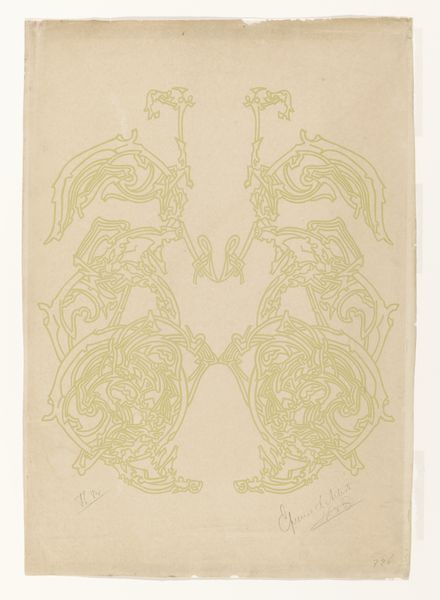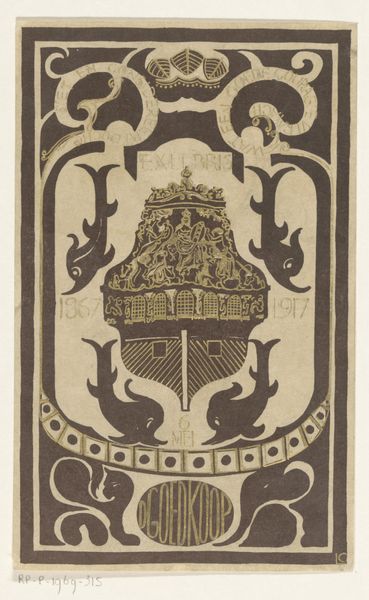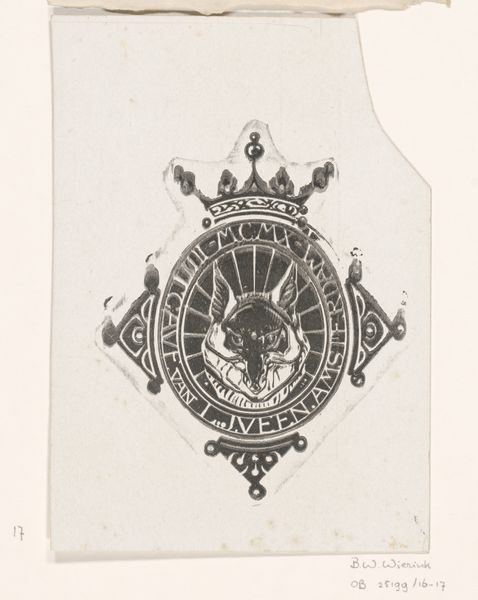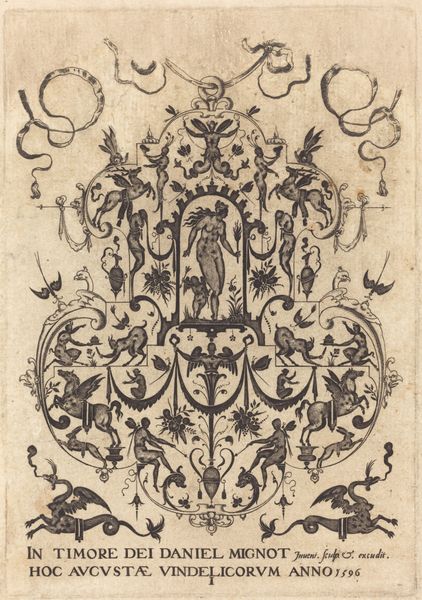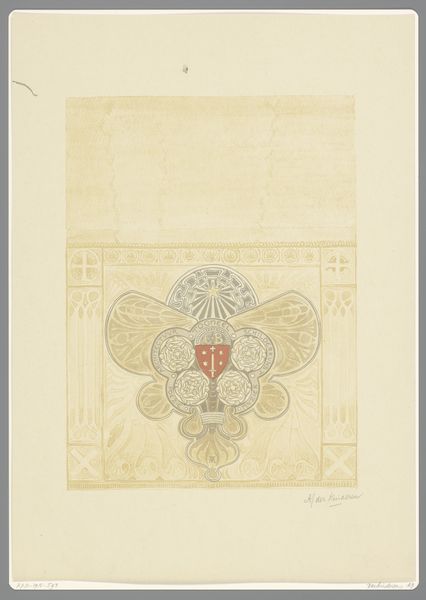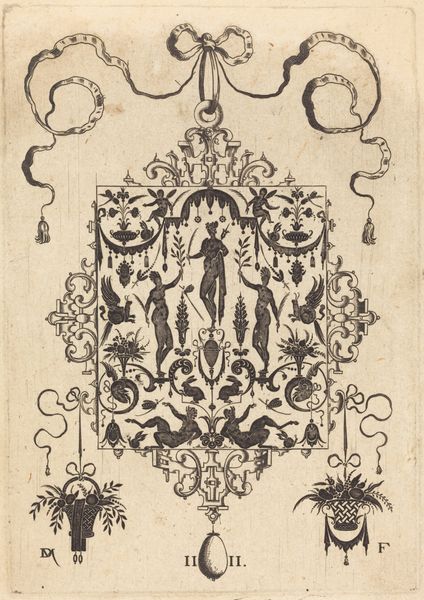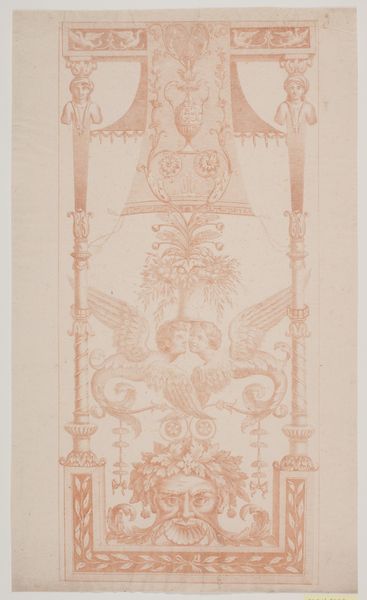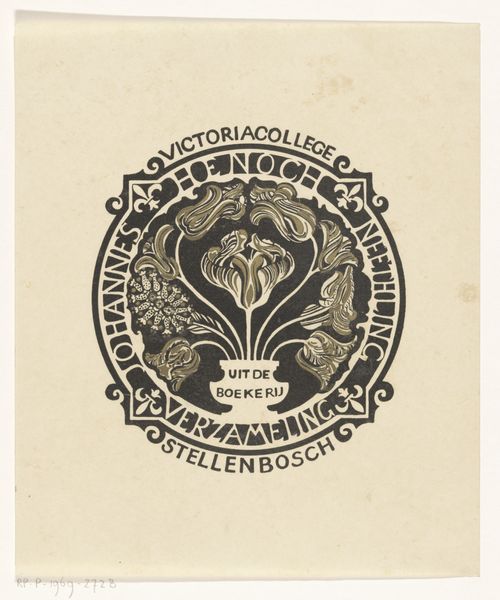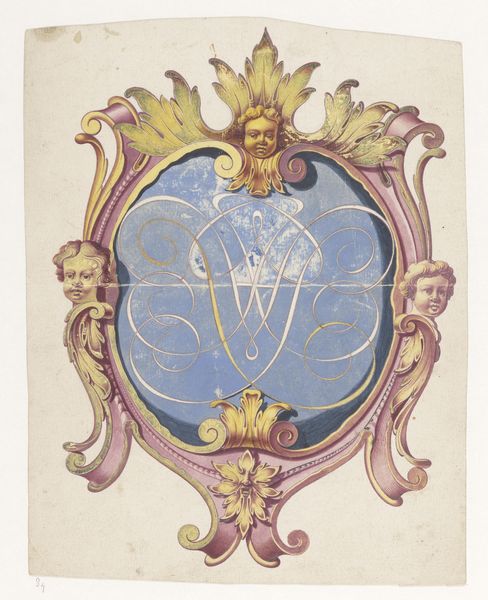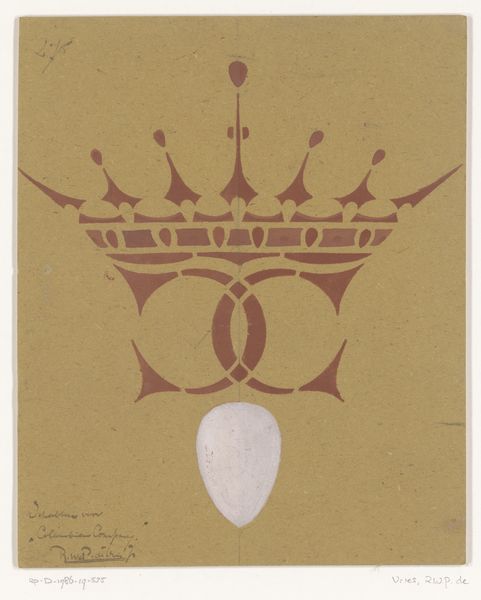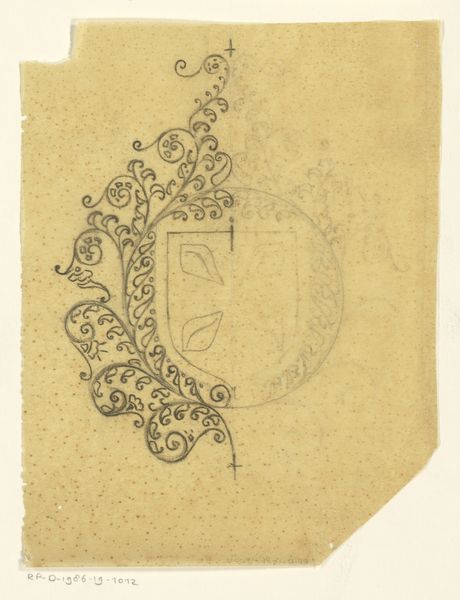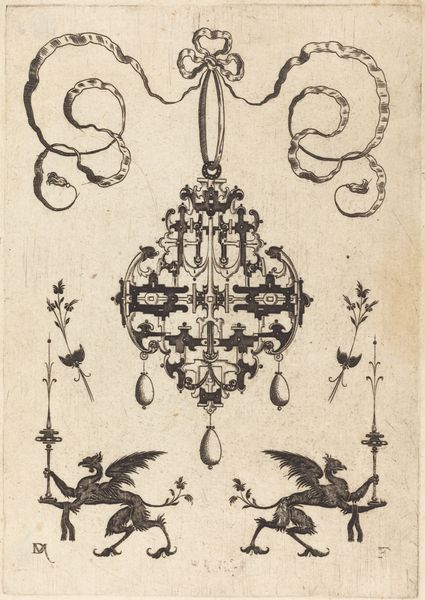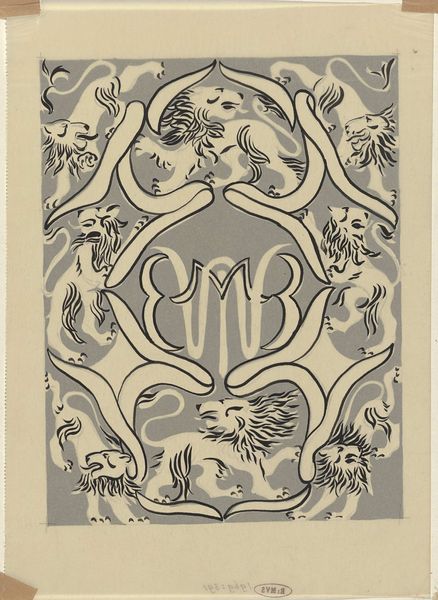
graphic-art, print, typography, woodblock-print
#
graphic-art
#
organic
#
art-nouveau
# print
#
pattern
#
typography
#
linocut print
#
woodblock-print
#
organic pattern
#
pattern repetition
Dimensions: height 350 mm, width 277 mm, width 554 mm
Copyright: Rijks Museum: Open Domain
Curator: Here we have "Omslag van muziekstuk 't Koningskind" – Cover of music piece 'The King's Child' – a 1909 print by Carel Adolph Lion Cachet. Editor: It feels very much of its time; I'm struck by how its delicate coloring clashes with the somewhat severe symmetry, lending it an unexpected feeling of melancholy. Curator: Yes, there's a distinct visual tension. The Art Nouveau style, which Cachet was known for, heavily incorporates those organic, flowing lines we see throughout, reflecting a broader symbolic yearning to find harmony with the natural world during rapid industrialization. Editor: Precisely. It’s fascinating how design elements – the crown, for instance, atop the interwoven lettering – function both to celebrate royalty while perhaps, subtly, evoking themes of control, a sense of folk tradition idealized through its own packaging. Curator: That crown, rendered simply yet elegantly, does tie directly to the artwork's title; it symbolizes rulership and, in the context of the "King's Child," perhaps hints at larger societal dynamics—who holds power and who doesn’t. We’re looking at a Volkslied – a folk song. Editor: Exactly. Placing the royal iconography directly over something deemed “folk” reveals volumes, doesn't it? About class, about who's telling these stories and how. Curator: There’s a recurring, almost obsessive use of symmetrical pattern in Cachet’s linocut and woodblock prints. Here it creates both structure and decoration. The repetitive swirls, though seemingly benign, can suggest both stability and, possibly, a constraint – a world held in check. Editor: And the organic repetition feels important when we discuss these sorts of symbolic restraints. Are the characters here in bloom or held captive within their class positionality? Curator: It's compelling how this single sheet embodies a microcosm of anxieties and aspirations during that era, especially as artistic expressions wrestled with social realities. Editor: Agreed, and viewing Cachet's print, even now, allows us to revisit the layered dialogues around societal narratives and the art that attempts to define them.
Comments
No comments
Be the first to comment and join the conversation on the ultimate creative platform.
